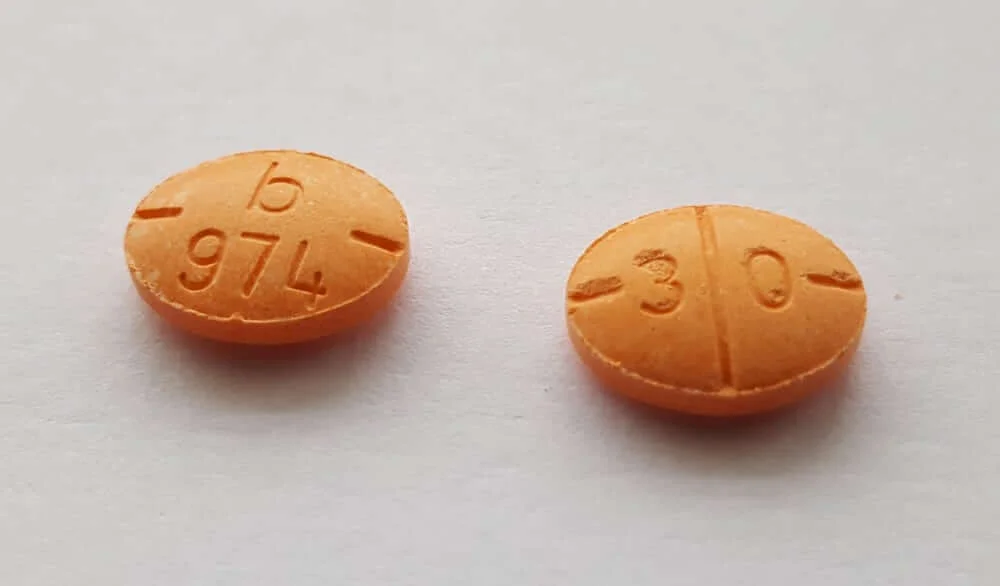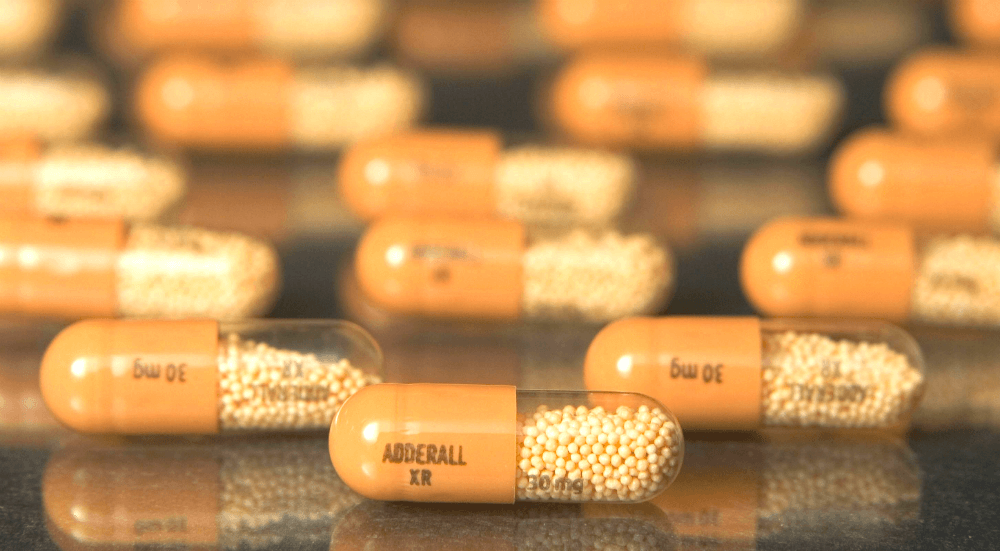Adderall is a prescription stimulant drug that has a potent effect on the brain, but it is also used off-label as a nootropic by various professionals and students alike. It is considered one of the most commonly prescribed meds in the USA. Despite the fact that it is so popular, most individuals know little about it, especially those taking it for the first time.
So, just what is this med? What are its warnings and side effects? How long does Adderall stay in your system, and can it show up on a drug test? This guide answers these questions, so keep reading to discover more about this stimulant, including its uses, side effects, and benefits.
What Is Adderall?
Adderall is a powerful central nervous system (CNS) stimulant designed to help manage the symptoms of attention deficit hyperactivity disorder (ADHD) & narcolepsy. It contains a combo of amphetamine & dextroamphetamine as its active ingredients. In an analysis of the efficacy of Adderall for ADHD, it was shown to be efficacious for signs of hyperactivity-impulsivity, inattention, and aggression [1]. Note that it is a prescription medication, meaning you should render a doctor’s prescription to buy it from a pharmacy.
Adderall tablet functions by augmenting the levels of brain chemicals called neurotransmitters, such as norepinephrine & dopamine, which can improve focus, attention, & overall cognitive functioning. Besides, some individuals may use it for non-medical purposes, such as studying or working for long hours, as it is believed to have a potent stimulating effect on the brain. Regardless, this usage of Adderall isn’t recommended, as it can be dangerous & can cause serious negative effects.
Adderall comes in both an immediate-release (IR) and extended-release (XR), or slow-release, formulation. The IR version of the drug comes in pill form, while the XR formulation is available as capsules. Dose strengths of Adderall IR are 5 mg, 7.5 mg, 10 mg, 12.5 mg, 15 mg, 20 mg, and 30 mg, while the XR version comes in 5 mg, 10 mg, 15 mg, 20 mg, 25 mg, and 30 mg strengths. The usual dose of this med is 5 mg to 60mg per day in divided doses, based on the patient’s response to therapy. For the immediate-release formulation, the maximum dose rarely exceeds 40mg per day.
A generic version of Adderall is available as well. It contains the same active ingredients (amphetamine & dextroamphetamine) as branded Adderall. The available dose strengths for generic version of the med are 1.25 mg, 1.875 mg, 2.5 mg, 3.125 mg, 3.75 mg, 5 mg, and 7.5 mg [2]. It’s important to note that the appropriate dose of Adderall, whether branded or generic, may vary depending on an individual’s medical history, current health condition, & other meds they are taking. Always follow the dosing instructions provided by your physician & never take more than the recommended dose.
Adderall is intended to be administered orally. Do not snort it, as doing so can increase the risk of long-term damage to the body. Dividing a high single-dose of Adderall (e.g., into a quarter) isn’t recommended & can be dangerous. Breaking or crushing the tab can alter the controlled release mechanism & ultimately result in a rapid release of the med, leading to an overdose & possibly life-threatening negative effects.
Warnings and Side Effects
It’s essential to be aware of the potential risks & adverse effects linked with Adderall and to use the med exactly as prescribed by a physician. Here is a list of some common negative effects of the medication [3]:
- anxiety;
- trouble sleeping;
- nausea;
- dizziness;
- headache;
- decreased appetite.
Some rare but more serious adverse effects of this med include:
- seizures;
- diarrhea;
- blurred vision;
- psychotic episodes;
- sex drive changes;
- heightened blood pressure;
- mental/mood changes (such as mood swings, agitation, aggression, & depression);
- heart problems (e.g., heart attack, heightened heart rate, chest pain).
It’s essential to inform your physician about any medical conditions you have & any other meds you are taking before administering Adderall. The med should not be taken by individuals who have a history of drug or alcohol abuse, heart disease, severe anxiety or agitation, or a history of allergic reaction to sympathomimetic drugs. Females who are pregnant or breastfeeding are advised against using Adderall. The med is classified as a pregnancy category C drug, meaning it has not been established as safe for use when pregnant.
Besides, it’s necessary to know what happens after you quit taking Adderall. After you stop taking it, you may experience withdrawal symptoms such as irritability, fatigue, depression, changes in appetite, changes in sleep (insomnia or excessive sleepiness), as well as decreased energy & motivation levels. The effects can vary from individual to individual & may not necessarily occur in all users. Further, patients who are addicted to this med may experience uncomfortable signs when they miss a regular dose of the stimulant.
You may wonder whether you can take Adderall before you drink alcohol. Well, one uses this med without mixing it with alcohol. However, in case you take both substances together, this can heighten the risk of dehydration, heart problems, & other serious health issues.
Further, a heavy user (or an individual who takes the drug frequently & in large amounts) may often exceed the recommended or prescribed dose. Repeating the habit every day can ultimately lead to physical & psychological dependence, plus increased health risks and potential negative consequences.
How Long Does It Take for Adderall to Start Working?
The time it takes for Adderall to start working can vary depending on the individual’s body & the specific formulation of the med being taken. Adderall IR typically takes effect within 30–60 minutes after ingestion. Its peak level is reached about 3 hours after administration. Consequently, while you can anticipate Adderall to begin acting quickly, it will take several hours to reach maximum potency. Adderall XR, on the other hand, can be slightly slower, frequently taking effect from 1 to 2 hours after ingestion.
Adderall XR has a “dual bead” release system. One type of bead releases the med instantly after administering it by mouth, while the other bead releases later in the day just to prolong the duration of action of the med [4]. Unlike instant immediate-release tabs, the maximum concentration of Adderall XR is reached about 7 hours after initial dosing.
How Quickly Does Drug Leave Your System?
Adderall XR is designed to offer a longer-lasting effect compared to the IR version. Capsules dissolve slowly over time, providing a steady supply of the medication over an 8–12 hour period. The effects of Adderall IR typically last for 4–6 hours, after which the levels of the active ingredients in the bloodstream begin to decrease. This means that people who take this drug formulation may need to take multiple doses throughout the day to maintain the desired effect.
However, these factors can affect the rate at which Adderall leaves the system:
- dosage: The higher the dose, the longer the drug will take to leave the body;
- frequency of use: Taking Adderall more frequently will result in a longer elimination time;
- hydration levels: Adequate hydration can help the body eliminate the med quicker, while dehydration can slow the process;
- food intake: Eating a meal high in fat can slow the absorption of the stimulant, which can extend the elimination time;
- age: As people age, their metabolism tends to slow down, which can prolong the elimination time of the medicine;
- weight: Individuals with a higher body weight tend to metabolize & eliminate Adderall more slowly than those with a lower body weight;
- liver & kidney function: Individuals with impaired liver or kidney function may have a slower rate of metabolism, which leads to a longer time for the med to leave the body;
- other meds coadministered: Taking other meds at the same time as Adderall can slow or hasten the elimination time of the drug, depending on the specific meds involved and the way they interact.
It’s important to keep in mind that the elimination time of Adderall can vary greatly from person to person, and the above-given factors should be considered in conjunction with professional medical advice.
Typically, the elimination process of Adderall continues until the med is completely out of the system, which can take several days. Its elimination can be faster in people with a faster metabolism, as well as in individuals who have taken the med for a long time, as the body may have developed a tolerance. On the other hand, the elimination process may be slower in individuals with liver or kidney concerns, as these organs are involved in the elimination of the med from the body.
Adderall & Drug Testing
You may wonder whether Adderall can show up on a drug test. Yes, it can show up as an amphetamine on some drug tests. The presence of the med can be detected in the body through various methods. The specific method used & the cutoff levels used for detection can influence the length of time that the drug can be detected.
Methods used to determine if Adderall is still in the body include the following:
- urine drug test: As the most typically used type of drug test, it can detect Adderall presence in the body for up to 72 to 96 hours after the last use;
- hair drug test: It’s less common and can detect the med for up to 90 days after use, as it is stored in hair follicles;
- blood drug test: It can detect Adderall for up to 46 hours after use, but this method is less commonly used due to the invasive nature of the test;
- mouth swab drug test (or saliva drug test): It can detect the med for up to 20–50 or even 72 hours after use. It is becoming more commonly used due to its non-invasive nature, quick results, & ease of use.
Adderall can sometimes induce false-positive results for amphetamines in some drug tests. This can be due to cross-reactivity with other substances, such as cold meds, or issues with the test methodology. Further, med test cutoff levels, or the minimum amount of the drug that needs to be present in the sample for it to be detected, vary between testing labs & can affect the results of a drug test. In some cases, the use of Adderall may also trigger a false positive result for other stimulants, such as methamphetamine. It is often detected in drug tests using a specific cutoff level for its metabolites. Therefore, it’s essential to inform the testing lab of any prescription meds you are taking, including Adderall.
Conclusion
In summary, Adderall is a powerful stimulant drug with various benefits. It typically takes 30–60 minutes to start working, with peak effects occurring approx. 3 hours after ingestion. It can stay in your system for up to three days, depending on factors such as your age, weight, & metabolism. However, the effects of the drug may wear off after 4–6 hours, requiring additional doses throughout the day to maintain its effects. Further, the detection time for the stimulant in a drug test depends on several factors, such as the type of the test, the amount of the med taken, & the frequency of use. Before using the med, it’s essential to understand how it influences your body to avoid any negative consequences. Always consult a doctor before starting treatment with any medicine.
References
- Efficacy of Adderall® for Attention-Deficit/Hyperactivity Disorder: A Meta-Analysis. By S. V. Faraone and J. Biederman. Published: July 26, 2016. Retrieved: February 9, 2023. Journals.sagepub.com.
- Generic Adderall Availability. Last updated on February 9, 2023. Retrieved: February 9, 2023. Drugs.com.
- Side Effects of Adderall (Amphetamine, Dextroamphetamine). Last updated on July 19, 2022. Retrieved: February 9, 2023. Rxlist.com.
- Adderall XR Label (pdf). Retrieved: February 9, 2023. Accessdata.fda.gov.









